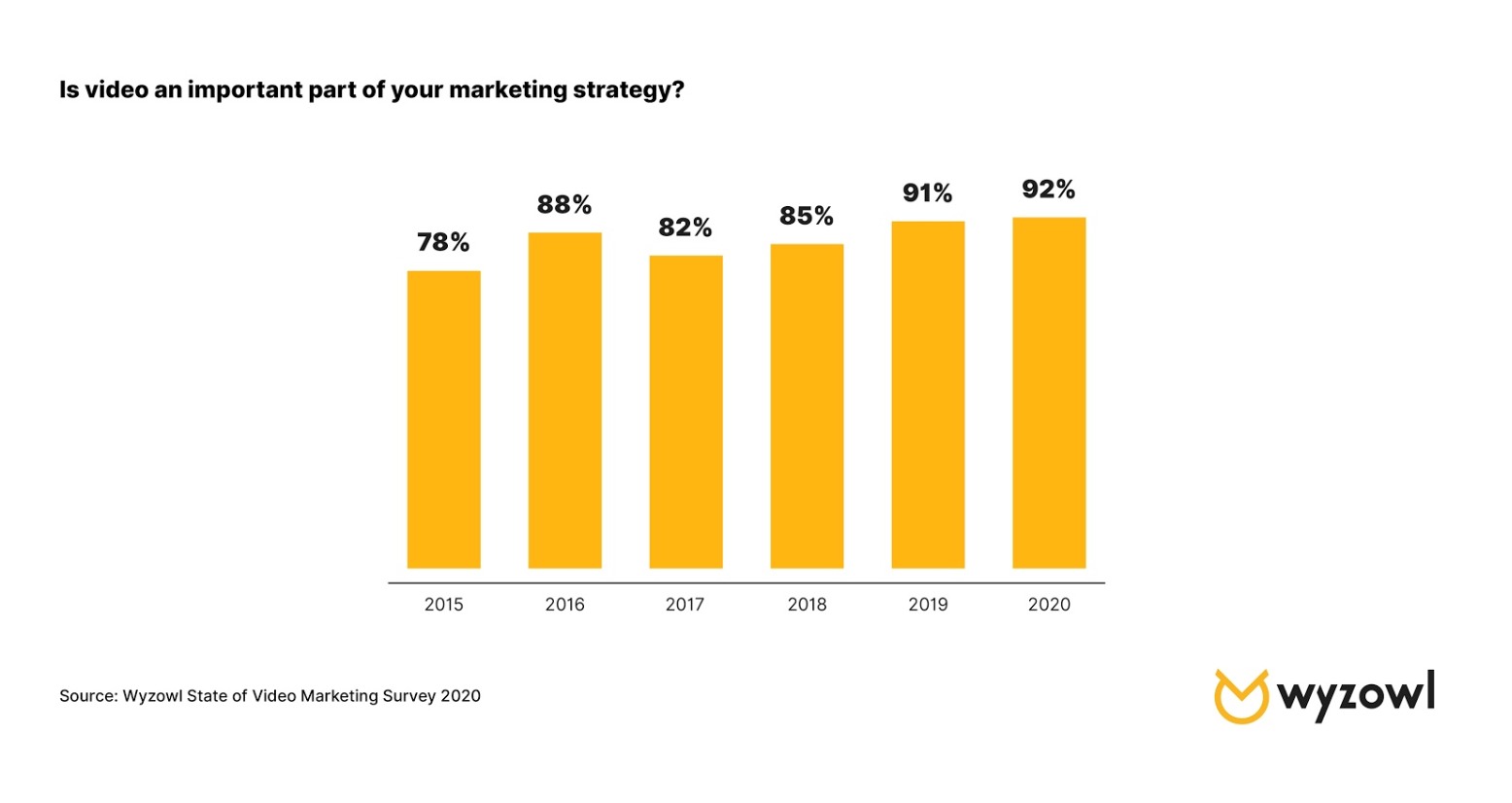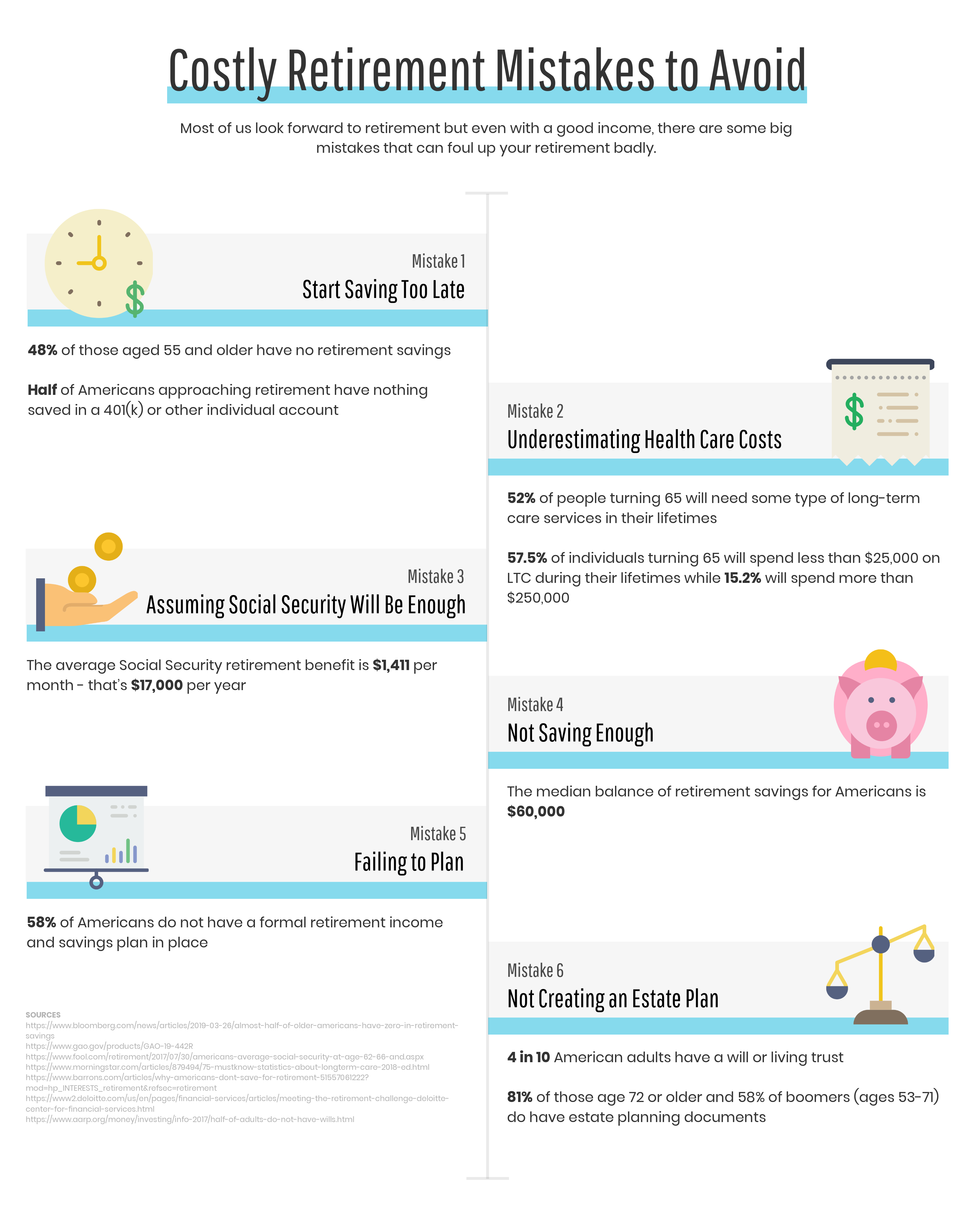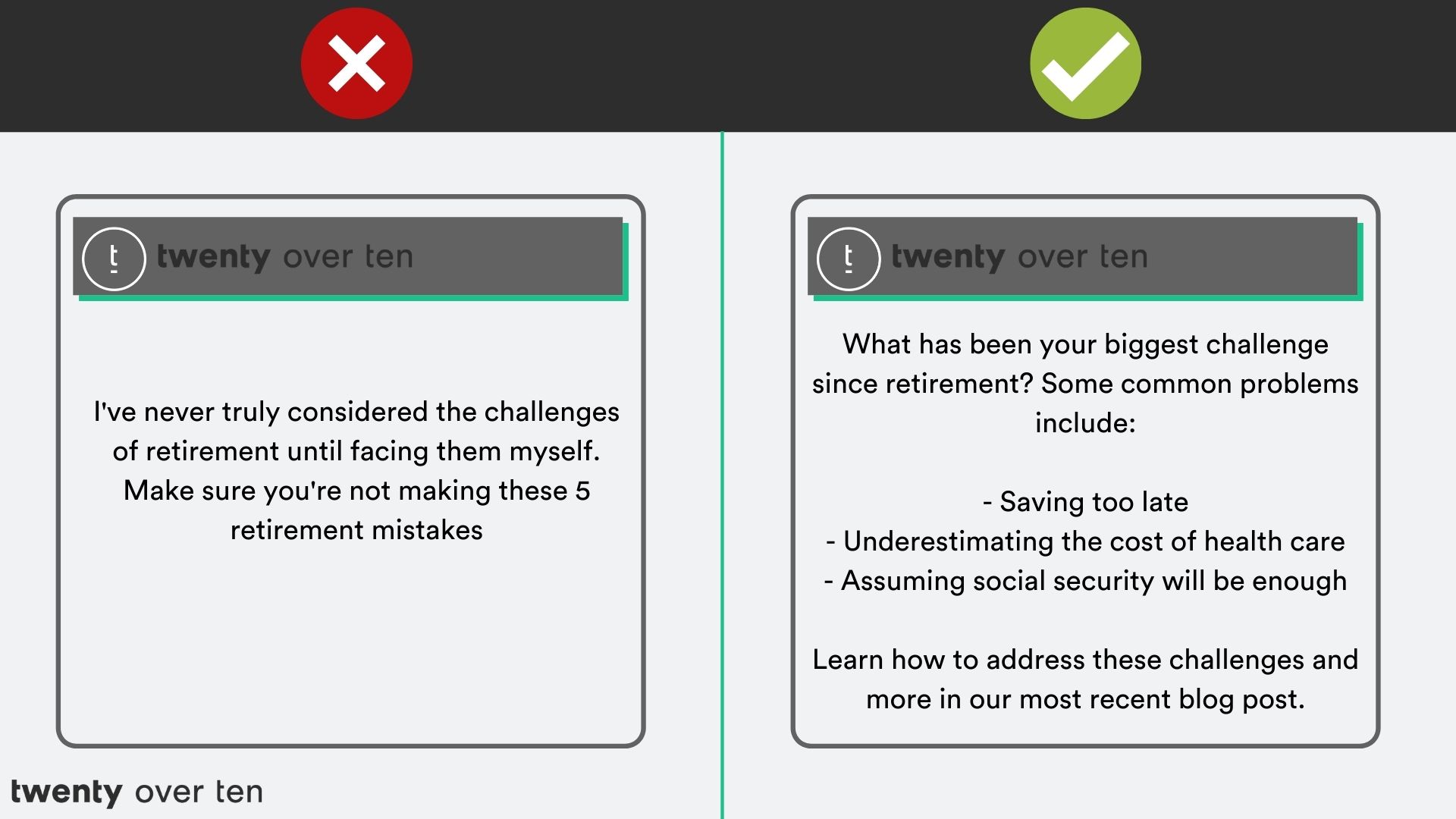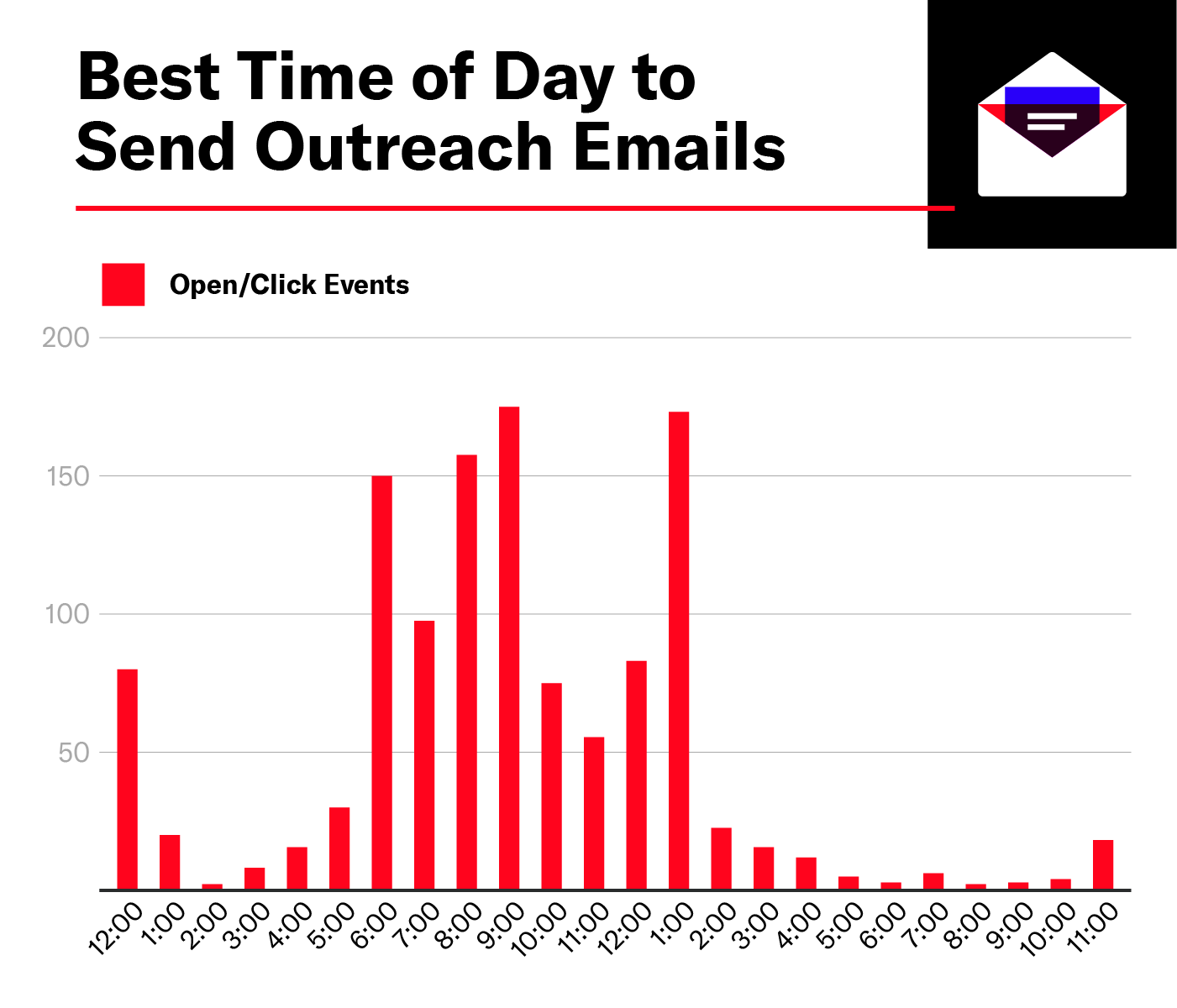For financial advisors, the process of creating marketing content can be too time-consuming, especially without help from an intern or marketing manager. Sacrifices are often made, in terms of content quality or quantity, and the marketing efforts of these advisors often suffer as a result.
The solution is to repurpose your content. This does not mean copy-pasting across email, social etc. Rather, it involves adjusting the perspective and approach of your material to fit the platform and context in which it will appear.
Repurposing content allows you to:
- Easily brainstorm new ideas
- Save time
- Establish cohesion amongst your firm’s marketing efforts
- Easily expand to other content platforms
In this ultimate guide, we will show you the process we use to create, breakdown and repurpose content for each channel, without reducing quality.
Create Groundwork Content First
One month of content marketing requires quite a bit of material, so laying the largest foundation is important. Blogs and webinars are the best content for establishing this groundwork because of their long format and research requirements. The process of diving into a subject for links, resources images and general knowledge creates new opportunities. New questions arise from new material, allowing us to brainstorm new solutions.
This makes long-form content an excellent source for ideas, but also provides the starting point for repurposing smaller sections into larger pieces of their own. For example, in this blog on our top favorite financial advisor logos, we bring up the topic of color psychology. For the sake of that blog, we only provided the information necessary to discuss logos. But, the subject of color psychology itself is vast, allowing plenty of opportunities to create larger blogs.
Both content types have additional individual benefits:
Blogs:
- SEO: The largest benefit of a blog is the opportunity for search engine optimization. Text is easier for search engines to crawl and index
- Linkability: A large amount of text, references and sources provides plenty of opportunities for link building. And a particularly high-performing blog may also be shared across other platforms
- Information is easy to sort: Headers provide clear demarcations for readers, but also provide the opportunity to easily find needed information, rather than sorting through video playback or scrub-bar
- Lead capture after reading: Blog often request email signups after reading. This allows visitors to determine whether the content is valuable to them before providing contact info
Webinars:
- Interactive: Webinars typically contain live chat rooms, giving users the chance to ask direct questions
- More personalized: Any content can be personalized, but a webinar makes it more natural, as you are seeing the actual face of an individual, speaking to you in real-time
- Generates a greater sense of urgency: Webinars run off a timed basis. Many are recorded for later use, but one of the largest benefits, interaction, is lost if you aren’t present
- Captures leads before viewing: Webinars will often require the user to sign up or register before the event. This allows advisors to capture leads before anything goes live
From chat room questions to on-page analytics and blog success, these benefits are an excellent source for new content. But in this guide, we will be focusing on a webinar created by our very own Rachel Hanley:

The resources used to research the topic of retirement can then be reframed and repurposed for other content. The key to reformatting your material is to adhere to the best practices of each platform. Email, social media, blogs etc. are used for a variety of reasons and achieve different results along the buyer’s journey.
Video:
Video is one of the best options for repurposing content. This is because videos are often more entertaining than traditional forms of communication, making them the most preferred method for distributing content amongst users. It’s also an ever-growing medium and one of the most popular platforms for users and marketers. In fact, 88 percent of marketers believe that video has a positive return on investment:

How to Use Videos:
Video content is easy to distribute, and often enhances the quality of your content. They can be added to blogs, included in social media and shared through email, where other forms of content are often isolated.
How to Create Videos:
Creating video content can become time-consuming, especially if you’ve never done it before. But it doesn’t have to be complicated. You can receive the benefits of video through a few different options. These can include out-sourcing your video production through a production company, creating content from stock video or creating a presentation video like the one above. Consider these tips when creating your first video:
- Create a script: Writing a script keeps things organized, but can also double as another form of content.
- Keep it short: Shorter videos are generally better for financial advisors. This is because the topics being searched are often questions about a single subject,
- Take the time to edit: Don’t post videos as-is. Taking the time to cut unnecessary sections and add titles, music and animation is worth it to create a better user experience and increase the quality of your videos
- Don’t take it too seriously: Being in front of a camera can be nerve-wracking, but don’t become critical of your final product. Showing mistakes makes someone relatable. Keep focused during the first video and speak as though you’re having a conversation. Having someone else present can help this feel more natural
When repurposing our “5 Retirement Mistakes” webinar we opted for an animated video and added an additional retirement tip. We opted for animation as this video would be distributed amongst clients, so a personal approach would not be appropriate.

Infographics:
An infographic is an excellent way to summarize information without taking the time and energy of video creation or blog writing. Infographics often have more present data, with statistics and sources readily available.
How to Use Infographics:
The summarized and eye-catching quality of Infographics makes them incredibly shareable, a useful trait for social media. An infographic is excellent for information that is new or not widely known, though it could also be used to reframe previous information under a new context.
How to Create infographics:
- Title and subheader: Provide these as a context for your data and summarize the statement of your infographic
- List data: Summarize your most important points and include them in a natural order
- Use color and illustrations: Colors, bolding and other elements can be included to focus the reader’s eye towards important information. While Illustrations can be used to make data memorable by relating it to something visual
You can see these best-practices in action with our repurposed infographic for retirement mistakes. Following suit with the video, we included our sixth point, but included much more data and sources to increase the credibility of the infographic. Colors and imagery separate the data points while bolding highlights important percentiles.

Social Media:
Many advisors will repurpose successful content from their website to be used on social. But the problem with this approach is the intention behind each platform. Blogs on your websites are there to help increase your searchability. They allow users to ask a specific question in a search engine and, if optimized for SEO, bring up content on your website.
Of course, this means the user already has a question in mind. They have a problem they want to solve and are taking action to solve it. This is where blogs come in, they provide value by providing solutions.
But we use social media in a different way. It’s a place to go when we’re bored or looking for entertainment. Social media is an escape. Content needs to be adjusted to respond to user intent.
How to Use Content on Social Media:
Repurposing material for social media is all about separating content and adjusting context to maximize the number of creatable posts. You can share any content type, from infographics to videos to blogs.
How to Create Posts On Social Media:
Here are some things to consider when repurposing content for social media:
- Always provide context: A blog may cover multiple tips under one subject. But a broad approach isn’t necessarily the best. It may reach more users, but those users already have plenty of content to scroll through, so it needs to catch their attention. Consider making your post more personal? Is there anything specific that you can relate to in this post? Connecting with your audience initiates interest in your content.
- Promote engagement: Engagement is “likes”, clicks, views and comments. It’s whenever someone interacts with your material. Engagement enhances the quality of your post but is also viewed positively by many social media algorithms. There are several ways to promote engagement, including asking questions, building awareness and discussing recent events.
- Include imagery: This includes pictures, videos and infographics. It’s the material that will catch the eye and make a user interested enough to continue reading or to click a link. Imagery should be high quality and add to the post, not distract from it. There are several free resources online for finding images to use. Just make sure you’re following best-practices for images on each social channel, as the audiences on each platform respond differently to certain imagery.
- Use Hashtags properly: Most social media users include a hashtag to add their post to an ongoing subject. This helps make your content discoverable when searching a hashtag, but there are other beneficial ways advisors can use hashtags, including to establish branding or demonstrate awareness. As a quick tip – avoid using hashtags that relate to your industry. Rather, include hashtags that target the interests of your audience. For example, a post targeting engineers might not want to use #financialmanagement, but a topic of interest to engineers.
- Schedule posts at a good time: A social media schedule establishes a deadline for content creation and assures your content appears in front of your audience at the right time. There are several tools you can use to create a schedule. Just make sure to research or analyze your own data to determine an appropriate posting time.
When writing your social posts make sure to keep things skimmable and, following tip number one, always provide context. The first post, in this example from our “5 Retirement Mistakes”, provides some information for the content, but doesn’t give enough context to make the reader curious, and certainly doesn’t promote engagement. Alternatively, the revised version begins with a question, prompting both curiosity and engagement, and establishes more detailed information to provide the reader with a greater understanding of the content’s value.

Email Campaigns:
If you’ve already captured the email of a lead, then there is a high chance they’re already interested in your content. For this reason, email is an excellent opportunity to use highly targeted content that addresses the concerns of a segmented audience.
How to use email campaigns:
Email campaigns can be used to “drip” on leads. Advisors can use these campaigns to distribute content on a schedule and nurture leads to eventually convert to clients. Such campaigns are highly targeted, addressing specific concerns, and providing content to resolve them. Alternatively, email campaigns can provide updates to current clients, making them aware of any additional services or benefits they’re missing out on, assuring their continual business.
How to create email campaigns:
There are a few things to consider when creating an email campaign:
Email segmentation: Segmentation allows you to compile several different email lists to target specific audience needs. These segments are determined by many factors, from demographics, to open rate. Lead Pilot provides an option for creating segmented email lists, allowing you to determine the factors that separate your contacts. Read our guide to segmentation best-practices to discover different ways to organize your audience.
Effective subject lines: Subject lines are incredibly important for reinforcing your open-rate and are the initial step in building your reader’s curiosity. CoSchedule has a free subject line tester that sets several parameters consistent with successful subject lines. Though certain metrics can be applied to determine the potential success of your subject line, remember to always write subjects that appeal to your audience. Emojis may statistically increase open-rates, but don’t use them if you feel they won’t resonate with your audience.
A/B Testing: Measuring the success of your emails is difficult if you have nothing to compare them to. A/B testing allows you to set different subject lines and descriptions for your emails, then distributes these emails to different audience members. You can then examine the success of each test group and see what performs better. Following the above example, you could include emojis in one email, and remove them from the other to see which performs better.
Scheduling: Most people don’t enjoy having a cluttered inbox. But, in many cases, it’s unavoidable unless you spend more time that you want reading and deleting emails. Setting an appropriate schedule is important, both to improve the chances of your email being opened and to prevent being perceived as spam. This includes determining a time of day, the number of days you will distribute emails and how long your campaign will last. Luckily, SiegeMedia performed a comprehensive examination of the current email trends of 2020:

Use the right content: Content needs to be appropriate to maintain your leads and clients. Though one way to enhance a campaign is to create consistency between each email. It’s best to maintain a similar subject between each email to build momentum. Beginning an email chain with retirement advice, and ending it on investing for millennials can cause confusion.
Following our other repurposed content. This email for retirement mistakes takes into consideration the above tips. The subject line targets the concerns of the audience. The copy is conversational and dispersed while providing enough context to make a reader curious.

Wrapping It Up:
Understanding how to adapt a well researched and comprehensive blog or webinar into other forms of content saves advisors time and effort. Opening up multiple content channels also helps to expand your marketing efforts, providing you with a variety of avenues for prospects to discover you. Take advantage of these repurposing methods and save time and energy the next time you’re scheduling your monthly marketing.

